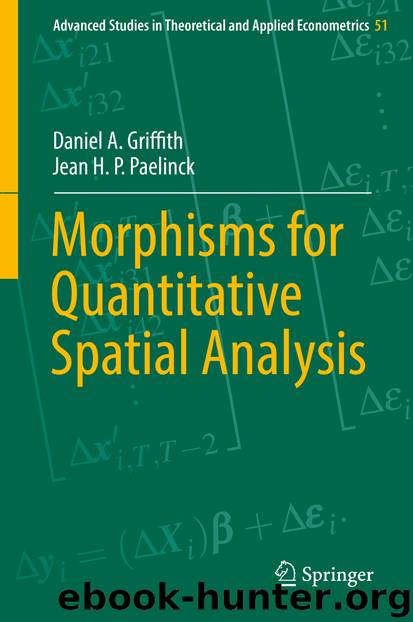Morphisms for Quantitative Spatial Analysis by Daniel A. Griffith & Jean H. P. Paelinck

Author:Daniel A. Griffith & Jean H. P. Paelinck
Language: eng
Format: epub
Publisher: Springer International Publishing, Cham
Original Tinbergen –Bos analysis was conducted on pure final demand relations (although Bos, as previously mentioned, presented an exercise that included input–output relations). Input–output relations require reasoning in terms of production levels rather than incomes, but the link between the two can be established easily, as the following equation shows for good i:
(12.1)
where y denotes income, q denotes production, and m denotes the production–income ratio (the inverse of the value added share). If we now consider a problem with two activities and agriculture (the latter being given symbol 0), three types of centers can be constructed: centers with only activities 1, centers with only activities 2, and mixed centers (here given index 3). Figure 12.1 shows how complex the model already is; we subsequently return to this complexity (see Sect. 12.2.2). In Fig. 12.1, the a k y l flows represent final deliveries, and the v2-flows deliver intermediate goods and services between centers (or with agriculture); the connecting lines complete the interpretation.
Fig. 12.1A Tinbergen –Bos system visualized
Download
This site does not store any files on its server. We only index and link to content provided by other sites. Please contact the content providers to delete copyright contents if any and email us, we'll remove relevant links or contents immediately.
International Integration of the Brazilian Economy by Elias C. Grivoyannis(70546)
The Radium Girls by Kate Moore(11572)
Turbulence by E. J. Noyes(7665)
Nudge - Improving Decisions about Health, Wealth, and Happiness by Thaler Sunstein(7199)
The Black Swan by Nassim Nicholas Taleb(6725)
Rich Dad Poor Dad by Robert T. Kiyosaki(6120)
Pioneering Portfolio Management by David F. Swensen(6041)
Man-made Catastrophes and Risk Information Concealment by Dmitry Chernov & Didier Sornette(5598)
Zero to One by Peter Thiel(5450)
Secrecy World by Jake Bernstein(4346)
Millionaire: The Philanderer, Gambler, and Duelist Who Invented Modern Finance by Janet Gleeson(4052)
The Age of Surveillance Capitalism by Shoshana Zuboff(3959)
Skin in the Game by Nassim Nicholas Taleb(3945)
The Money Culture by Michael Lewis(3796)
Bullshit Jobs by David Graeber(3793)
Skin in the Game: Hidden Asymmetries in Daily Life by Nassim Nicholas Taleb(3700)
The Dhandho Investor by Mohnish Pabrai(3539)
The Wisdom of Finance by Mihir Desai(3499)
Blockchain Basics by Daniel Drescher(3300)
